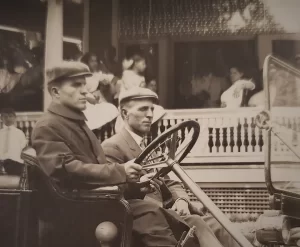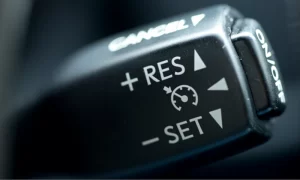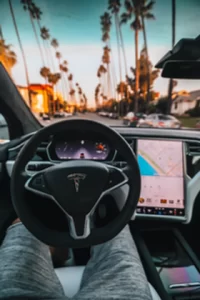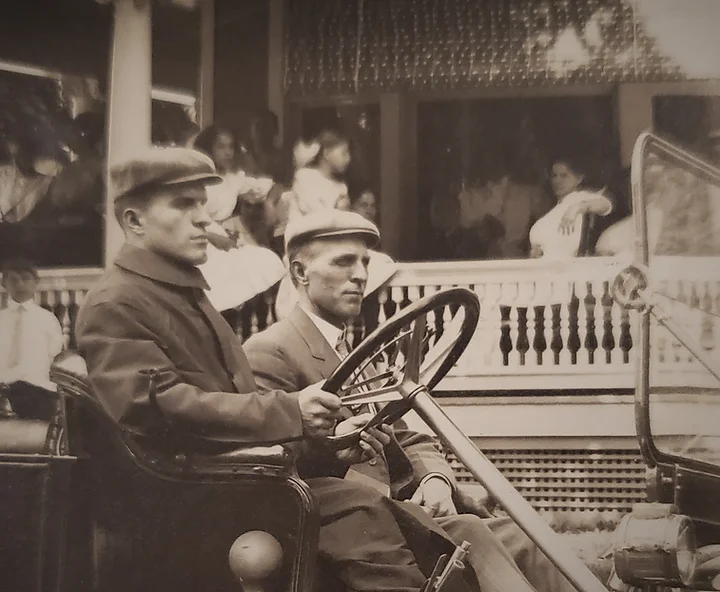When it comes to travel, there is one innovation that has changed the way we do things: the Cruise Control. The Cruise control allows drivers to maintain a consistent speed without having to constantly adjust their foot on the pedal. This innovation has made long road trips much more comfortable and relaxing for drivers. In this blog post, we will discuss the history of the Cruise Control and how it has changed the travel industry!
The Beginning of Cruise Control
The Cruise Control was invented by blind engineer Ralph Teetor. He rode in many cars driven by many types of drivers. One driver, however, Teetor’s own patent attorney, was a throttle-brake driver that so annoyed him that he decided to develop a device that would maintain constant speed. This was sometime in 1936, the genesis of what is now known worldwide as the Cruise Control.
 For the next 10 years, Teetor thought about how this could work, creating and testing ideas as he tinkered in his basement workshop. He filed his first patent on his speed control device in 1945, under the trade name, “Speedostat.”
For the next 10 years, Teetor thought about how this could work, creating and testing ideas as he tinkered in his basement workshop. He filed his first patent on his speed control device in 1945, under the trade name, “Speedostat.”
Teetor had discovered a device that would allow for smooth, consistent speed control and permit the driver to keep his eye on the road and adhere to a safe speed.
By 1949, Teetor had a good working model of his “Speedostat,” but it required more development to prepare it for production. The biggest challenge was to convince the Detroit automotive companies that his device would succeed.
As Teetor had said, “The general purpose is to make driving safer, easier and more economical.”
By late 1957, Ford, Chevrolet, and Chrysler were all testing Teetor’s speed control device. It was Chrysler who first introduced the device in 1958 on their luxury models, naming it “Auto-Pilot.” It proved so popular that by the end of the year, it was offered on their entire line of new cars. Chrysler boasted in their ad campaign that their new “Auto-Pilot” as “Acclaimed by experts as one of the greatest automotive inventions ever developed.”
The following year Cadillac offered Teetor’s device as optional equipment, calling it “Cruise Control,” becoming the popular name now recognized throughout the world. Lincoln, Chevrolet, Dodge, and others followed in 1960 and more brands in years to come.
Development of Cruise Control of Today
This remarkable device is now standard equipment on cars around the world. It can be argued that Teetor’s “Cruise Control,” was the first introduction to “self-driving” and “autonomous” cars, now in the forefront of today’s automotive technology.
 In recent years, automobile manufacturers have now introduced Adaptive Cruise Control (ACC) technology, which uses sensors to automatically adjust the speed of your car to match the speed of the car in front of you.
In recent years, automobile manufacturers have now introduced Adaptive Cruise Control (ACC) technology, which uses sensors to automatically adjust the speed of your car to match the speed of the car in front of you.
ACC systems allow you to set a following distance, or time interval, between your car and the car ahead, car-to-car distance options, such as: short, medium, or long distance. You can change the settings as traffic conditions change.
Cruise control technology has been a major breakthrough that has helped drivers make their journeys much smoother, safer, and easier. Additionally, modern cruise control is designed to adjust gears with smoother transitions, meaning drivers no longer have to intervene as much. Cruise control-like features continue to be enhanced and refined as safety controls designed to make driving a carefree experience.
Autopilot for Cars
Autopilot, or self-driving, is a new technology that has been developed to help make roads safer and more efficient for drivers. This is a feature that has been developed in Teslas and other companies. Automated vehicles use advanced sensory devices along with the latest systems in artificial intelligence, such as lidar and cameras, to sense their surroundings on the road. Instead of relying solely on humans, automated systems are used to control acceleration, deceleration, and other aspects of vehicle operation such as lane changing and braking.
 Autopilot offers many potential benefits such as lessening traffic congestion, improving safety by reducing crashes due to human errors and providing more convenient access to transportation services, especially for elderly and disabled individuals. While it still remains unclear how autopilot technology will interact with traditional human driven vehicles in the near future, this innovation presents a pioneering step towards autonomous vehicle applications which could revolutionize the way we get from point A to point B.
Autopilot offers many potential benefits such as lessening traffic congestion, improving safety by reducing crashes due to human errors and providing more convenient access to transportation services, especially for elderly and disabled individuals. While it still remains unclear how autopilot technology will interact with traditional human driven vehicles in the near future, this innovation presents a pioneering step towards autonomous vehicle applications which could revolutionize the way we get from point A to point B.
For more information on a true pioneer, Ralph R. Teetor and his rise to leadership; a documentary not to be missed, please check out our website @ www.blindlogicproductions.com
